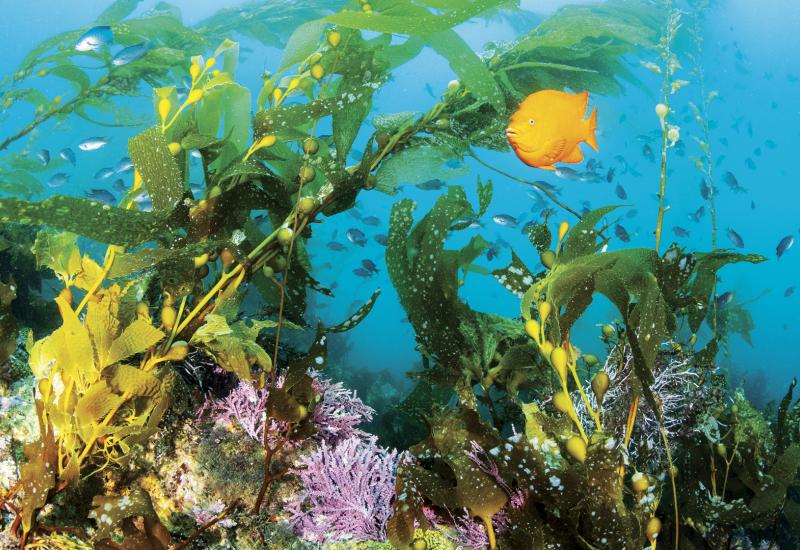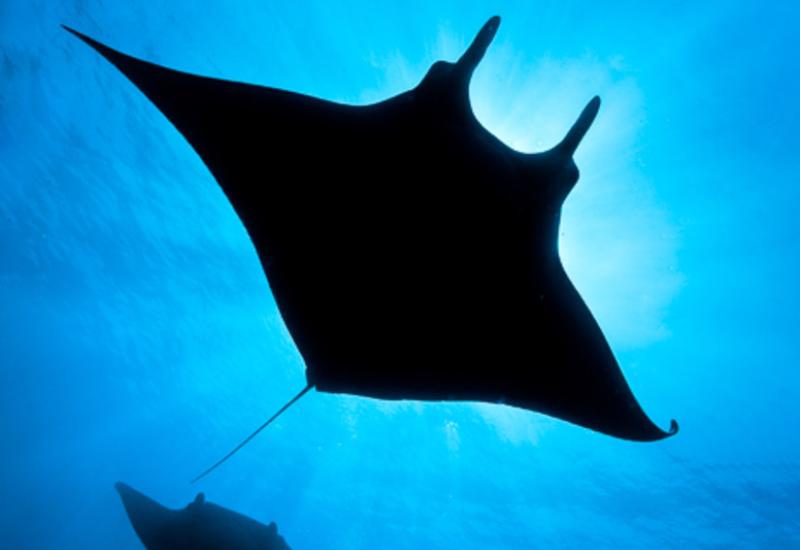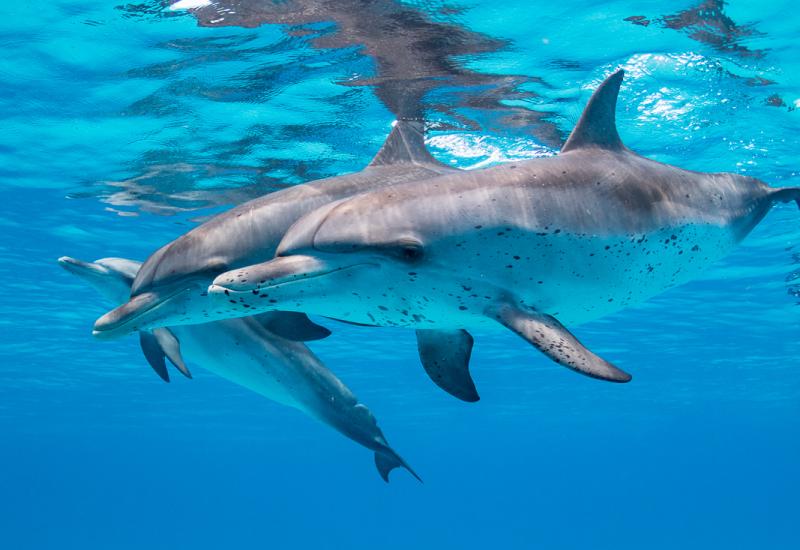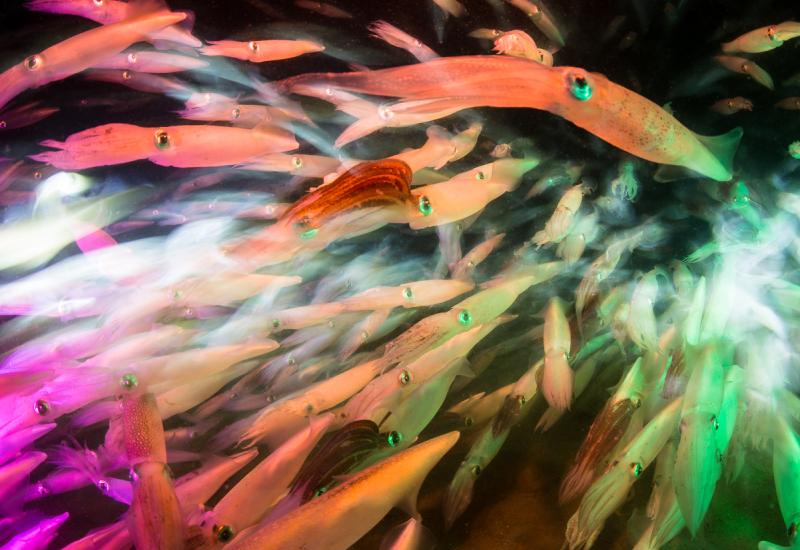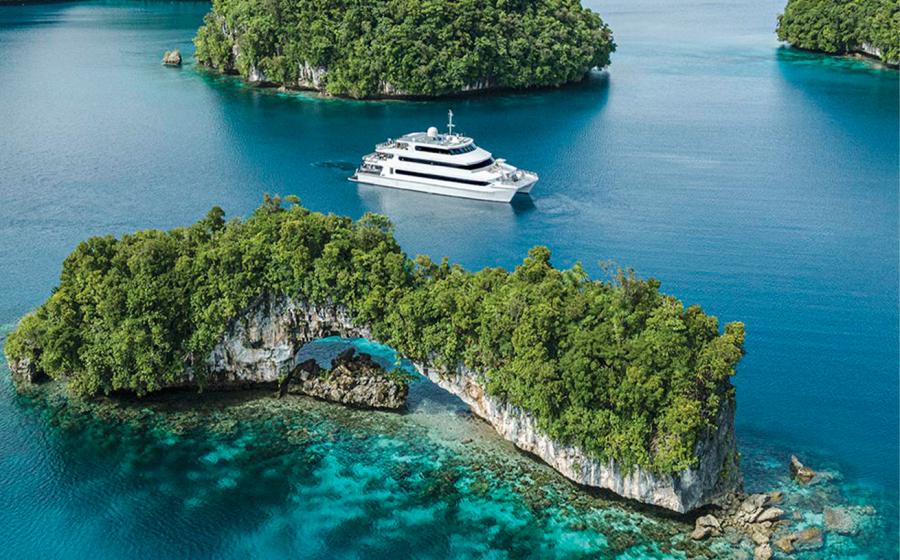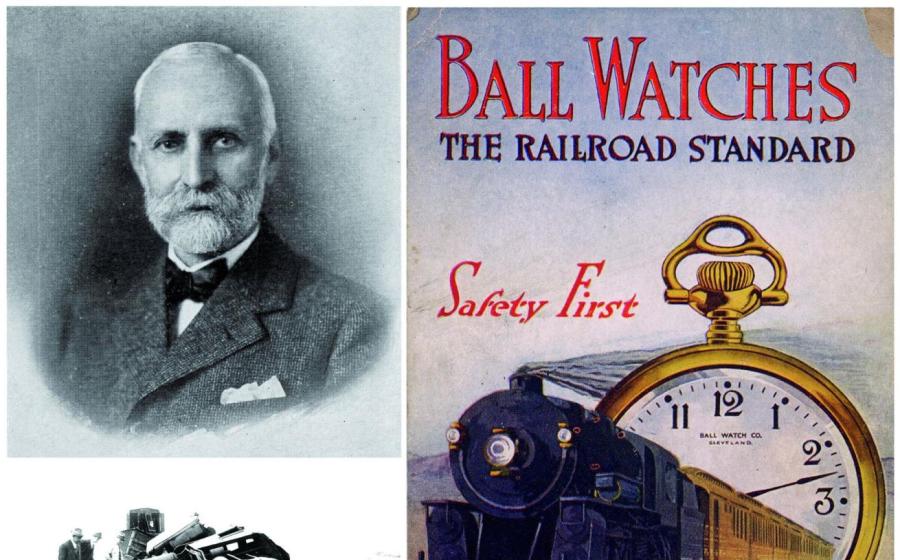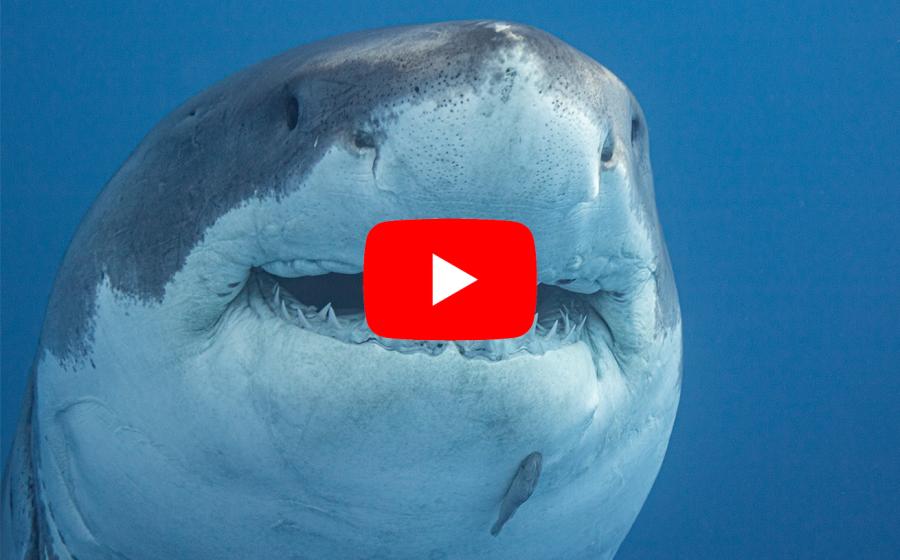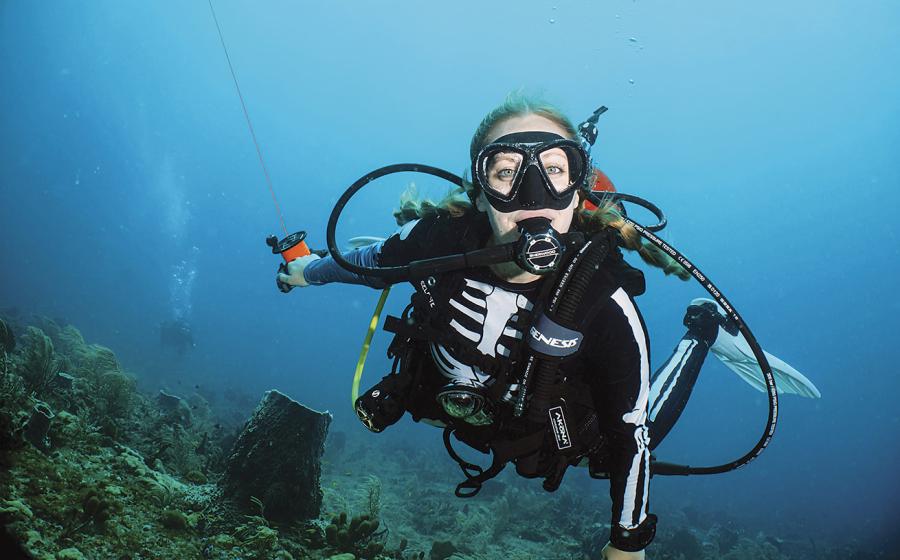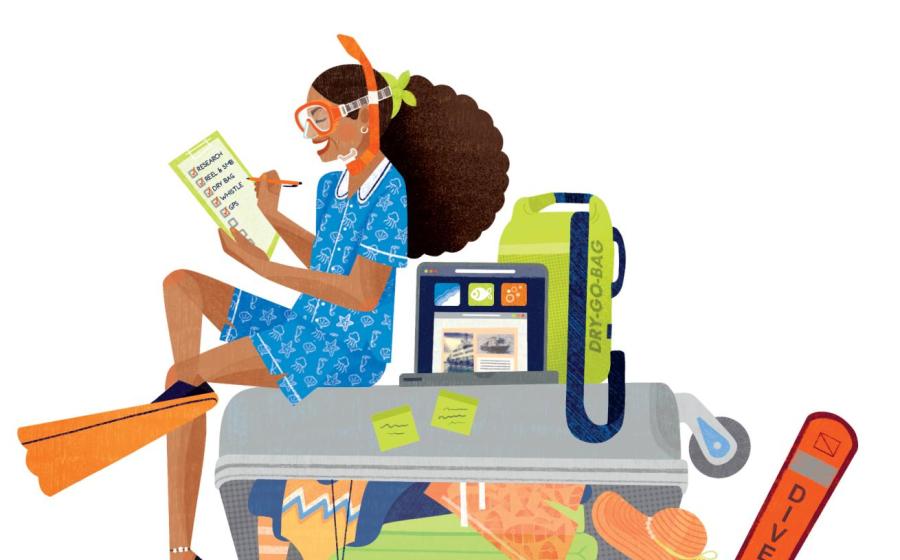Imaging Plus: Flying with Your "Baby"

Flying with Your "Baby"
Jim Decker
Travel is an important part of being a well-rounded underwater photographer or videographer. But the rigors of the road can play hell on sensitive equipment. Here are some tips to get your gear safely to your destination, and how to avoid excess-baggage fees.
Use luggage specially designed for photo equipment
Too often we see people use regular luggage, bubble wrap and stuff wrapped in clothes to pack their camera system, with the end result being broken camera gear. In the sorting process, baggage can fall up to three feet and be subject to mechanical sorting arms — as well as porters and bellhops. A sturdy, purpose-built camera bag designed for travel will cost less than therepair or replacement of damaged gear.
If you have a DSLR camera system, check it
Most DSLR systems are too big for carry-on luggage. Place all the underwater gear in the checked bag. Make sure batteries in lights are disconnected. Use a separate carry-on bag for your cameras, lenses, computer and hard drives.
Pack your carry-on as if it were being checked
A time will come when space runs out and your carry-on will have to be (gasp!) checked. Use an “airline friendly” camera bag designed to fit in an overhead compartment.
Travel on the same airline or one of its partners
If you travel a lot, or far distances, make sure you are enrolled in the airline’s frequent-flyer program and fly only on flights where you can accumulate status miles. Roundtrip air for destinations in the Pacific can be almost 20,000 miles for one trip — which will put you well on your way to achieving status. Depending on the airline, certain status levels will allow you an extra piece of luggage, extra weight or both — at no extra charge.
Take your laptop
Getting your images off the camera for review is crucial to improving your shots. Reviewing on the camera screen won’t show critical focus or enough exposure detail compared with a laptop screen. This will allow you to make adjustments to your shooting technique if needed. Make sure you have extra external hard drives so you can back up your work in case of a failure.
Take a travel luggage scale and know your weight limits.
Travel scales are inexpensive, compact and lightweight. You’ll always know the weight of your bags before getting to the airport and avoid being that person frantically repacking dirty underwear at the ticket counter. Take a copy of the airline’s baggage policy in case you have a problem with the ticketing agent.
An underwater photographer and videographer, Jim Decker is the CEO of Backscatter Underwater Video and Photo (backscatter.com). In each Imaging+ column, he will tackle practical problems in underwater photography and videography.
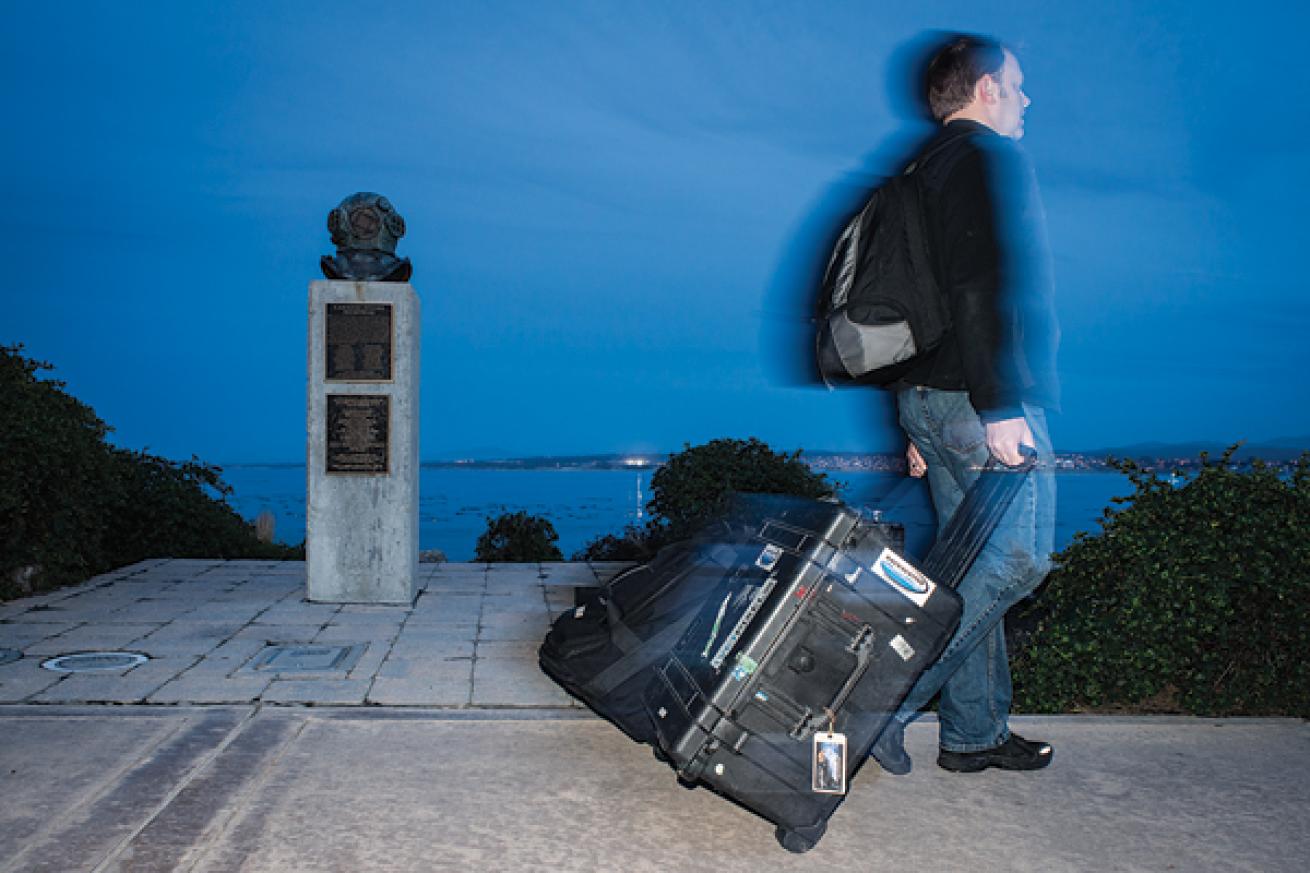
Jim Decker
Travel is an important part of being a well-rounded underwater photographer or videographer. But the rigors of the road can play hell on sensitive equipment. Here are some tips to get your gear safely to your destination, and how to avoid excess-baggage fees.
Use luggage specially designed for photo equipment
Too often we see people use regular luggage, bubble wrap and stuff wrapped in clothes to pack their camera system, with the end result being broken camera gear. In the sorting process, baggage can fall up to three feet and be subject to mechanical sorting arms — as well as porters and bellhops. A sturdy, purpose-built camera bag designed for travel will cost less than therepair or replacement of damaged gear.
If you have a DSLR camera system, check it
Most DSLR systems are too big for carry-on luggage. Place all the underwater gear in the checked bag. Make sure batteries in lights are disconnected. Use a separate carry-on bag for your cameras, lenses, computer and hard drives.
Pack your carry-on as if it were being checked
A time will come when space runs out and your carry-on will have to be (gasp!) checked. Use an “airline friendly” camera bag designed to fit in an overhead compartment.
Travel on the same airline or one of its partners
If you travel a lot, or far distances, make sure you are enrolled in the airline’s frequent-flyer program and fly only on flights where you can accumulate status miles. Roundtrip air for destinations in the Pacific can be almost 20,000 miles for one trip — which will put you well on your way to achieving status. Depending on the airline, certain status levels will allow you an extra piece of luggage, extra weight or both — at no extra charge.
Take your laptop
Getting your images off the camera for review is crucial to improving your shots. Reviewing on the camera screen won’t show critical focus or enough exposure detail compared with a laptop screen. This will allow you to make adjustments to your shooting technique if needed. Make sure you have extra external hard drives so you can back up your work in case of a failure.
Take a travel luggage scale and know your weight limits.
Travel scales are inexpensive, compact and lightweight. You’ll always know the weight of your bags before getting to the airport and avoid being that person frantically repacking dirty underwear at the ticket counter. Take a copy of the airline’s baggage policy in case you have a problem with the ticketing agent.
An underwater photographer and videographer, Jim Decker is the CEO of Backscatter Underwater Video and Photo (backscatter.com). In each Imaging+ column, he will tackle practical problems in underwater photography and videography.

